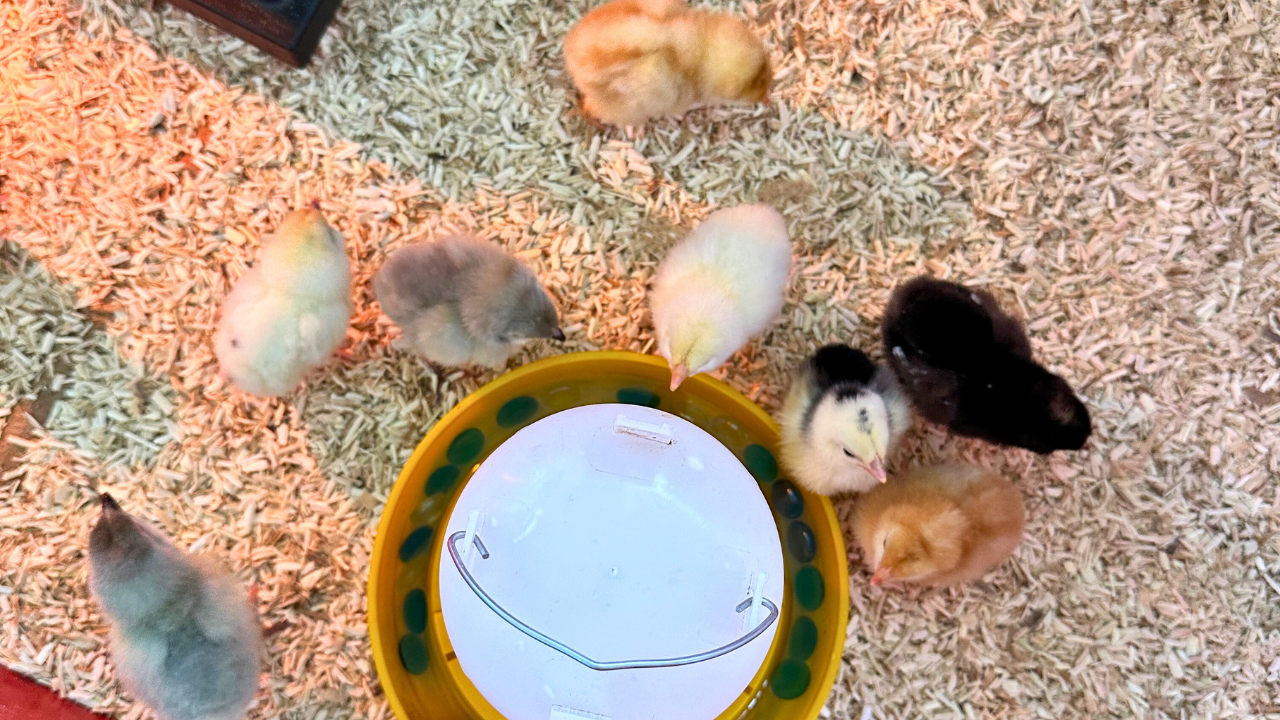Brooder basics for happy + healthy chicks
Mar 21, 2025
Raising chicks is one of the most rewarding parts of backyard chicken keeping—but your success starts long before those fluffy little feet hit the ground. A well-prepared brooder gives your chicks the best chance at growing into a strong, healthy flock.
Whether you’re a first-time chick parent or just looking to improve your setup, this guide covers everything you need to know about brooder basics—from containers and heat sources to hydration, feeding, and common mistakes to avoid.
What is a brooder?
A brooder is a safe, temperature-controlled space where chicks live until they’re fully feathered and ready to transition to their outdoor coop. It should provide four essentials:
✔️ Warmth
✔️ Food
✔️ Water
✔️ Protection (from drafts, pets, and accidents)
Choosing the right brooder container
Your brooder doesn’t need to be fancy—it just needs to be secure, draft-free, easy to clean, and offer enough space for your growing chicks. Common options include:
- Plastic totes
- Stock tanks
- Cardboard boxes (be cautious—moisture is an issue)
- Repurposed playpens or large storage bins
Our personal favorite? The Big Red Barn by Rent-a-Coop. It's easy to clean, has great ventilation, folds flat for off-season storage, and comes with hanging food and water systems that help reduce mess.
Brooder bedding tips
Good bedding keeps your chicks dry, healthy, and comfortable. Our top picks:
- Hemp bedding – Super absorbent, low dust, and compostable
- Pine shavings – Affordable and commonly used
❌ Avoid cedar—its oils can irritate chicks’ respiratory systems.
Heat: A chick’s lifeline
Chicks can’t regulate their own body temperature for the first few weeks. Your brooder must stay warm and consistent:
- Week 1: 95°F
- Lower by 5°F each week until chicks are feathered
✅ Heat plates, aka brooder plates, are a safer, energy-efficient alternative to heat lamps.
Place a thermometer at chick level and watch their behavior:
- Huddling under the heat = too cold
- Panting and avoiding heat source = too hot
- Spread out and active = just right
Feeding and hydration
Chicks absorb nutrients from their yolk sacs just prior to hatch, so water is the #1 priority in the first few days. Here’s what we recommend:
- Offer clean, fresh water with added vitamins and probiotics
- Use shallow dishes with marbles or pebbles to prevent drowning
- Introduce a high-quality chick starter feed (18–20% protein)
Once chicks are a couple of weeks old, treats can be added in moderation—our favorite is black soldier fly larvae, which are higher in protein and calcium than mealworms.
➡️ Don’t forget grit! Chicks need grit to digest anything other than starter feed.
Brooder safety checklist
- Keep the brooder away from other pets
- Secure electrical cords and heat sources
- Avoid direct sunlight and heat vents
- Clean daily and monitor for signs of distress or illness
- Get our list of chick and brooder supplies.
Common mistakes to avoid
- Overcrowding: Leads to stress, injury, and slower growth
- Slippery bedding (like newspaper): Can cause leg deformities
- Inconsistent heat: Use a reliable thermometer and adjust weekly
- Skipping hydration: Dehydration is a leading cause of chick loss in the first week
Final thoughts
Creating a healthy brooder environment isn’t complicated—but the details matter. With proper warmth, hydration, and care, your chicks can thrive in their first few weeks and be ready to transition to the coop with confidence.
Purchasing through these affiliate links helps support our blog at no cost to you. As an Amazon Associate, we earn from qualifying purchases. Thanks for supporting Cotton River Farm!



